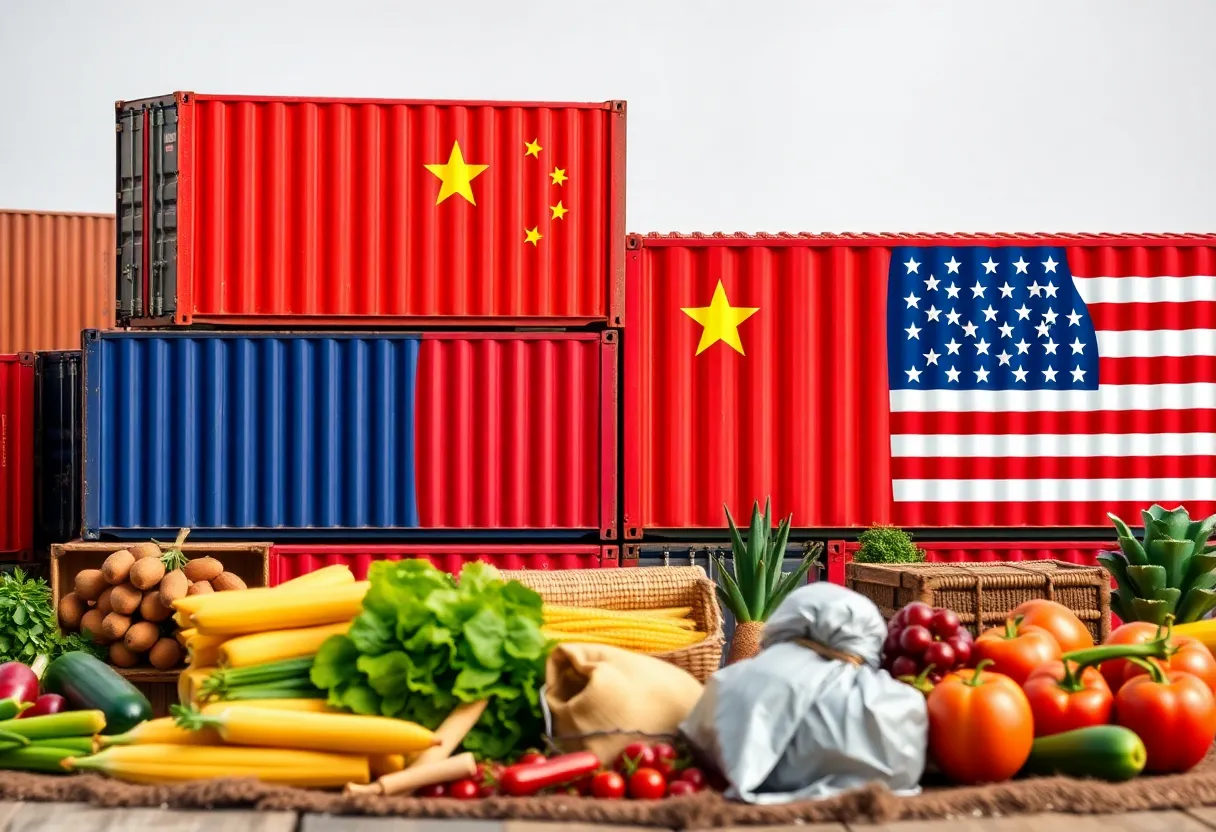

China and US trade war continues with new tariffs and restrictions.
In response to U.S. tariff increases, China has announced new tariffs between 10% to 15% on various American agricultural products beginning March 10. Additionally, 25 U.S. companies will face strict export and investment restrictions, raising concerns over escalating trade tensions. The backdrop includes President Trump’s recent tariff hikes, with the total tariffs on some goods reaching 45%. With U.S. agricultural exports at risk, analysts fear that this ongoing trade war could shake global economic relations into the future.
In a spirited response to the latest moves from the United States, China announced it will slap additional tariffs on a variety of American agricultural and food products, adding to the ongoing trade tensions. Starting on March 10, imports from the U.S. will be subject to new levies of 10% to 15%, making it clear that Beijing isn’t backing down without a fight.
To make matters even more complicated, Beijing is also placing 25 American companies under tight export and investment restrictions. This move has sparked concern among analysts who worry that such actions could further escalate trade tensions and impact businesses and consumers on both sides.
The backdrop of all this is President Donald Trump’s recent decision to increase tariffs on certain Chinese products by an additional 10 percentage points. This means that the total tariffs on some U.S. goods now stand at a whopping 45%. Interestingly, Trump claimed he didn’t anticipate a significant counteraction from China, a stance that many experts find baffling.
The trade war actually kickstarted shortly after Trump returned to the White House and has been ramping up quickly ever since. Just last month, Trump enforced 25% levies on goods from Canada and Mexico, although these were postponed for a bit to allow for continued discussions.
In response to previous tariffs from the U.S., China had introduced a 15% tariff on U.S. coal and liquefied natural gas, along with a 10% tariff on specific agricultural equipment. In comparison, this reaction seems relatively moderate, indicating that perhaps there was still a window of opportunity for negotiations.
It’s crucial to note that U.S. agricultural products make up about 17% of all agricultural exports to China this year. With new tariffs looming, the risk to American farmers and businesses is tangible. Some experts warn that these escalating tariffs could significantly shake up economic relations, not just between the two nations but for global trade as well.
During his first term, Trump attempted to cut down on China’s trade surplus through an aggressive tariff policy. This approach led to a lengthy two-year trade dispute. In a 2020 agreement, China had committed to purchase an additional $200 billion worth of U.S. goods. Unfortunately, they haven’t quite lived up to that promise, adding further strain to the relationship.
Interestingly, Chinese media reports suggest that Beijing has been gearing up for a long-term trade battle. They seem to be diversifying their markets and working to stimulate the domestic economy as a means of resilience. This proactive strategy hints at China’s intent to weather any storm that might brew as the trade tensions escalate.
With both sides digging their heels in, the future of U.S.-China trade relations looks uncertain. As both countries navigate this choppy waters filled with tariffs and restrictions, the impact on consumers and businesses will be closely watched. The outcome will not only influence the markets but could also shape global economic trends in the months to come.
News Summary Texas is experiencing a significant water crisis due to the rapid expansion of…
News Summary Newark Mayor Ras Baraka was arrested during a visit to the Delaney Hall…
News Summary The resentencing hearing for Erik and Lyle Menendez is proceeding as their attorneys…
News Summary The Trump administration is set to welcome its first group of white Afrikaners…
News Summary In a remarkable event, Cardinal Robert Prevost has been elected as Pope Leo…
News Summary The Monitor, a local news outlet, is set to undergo a name change…